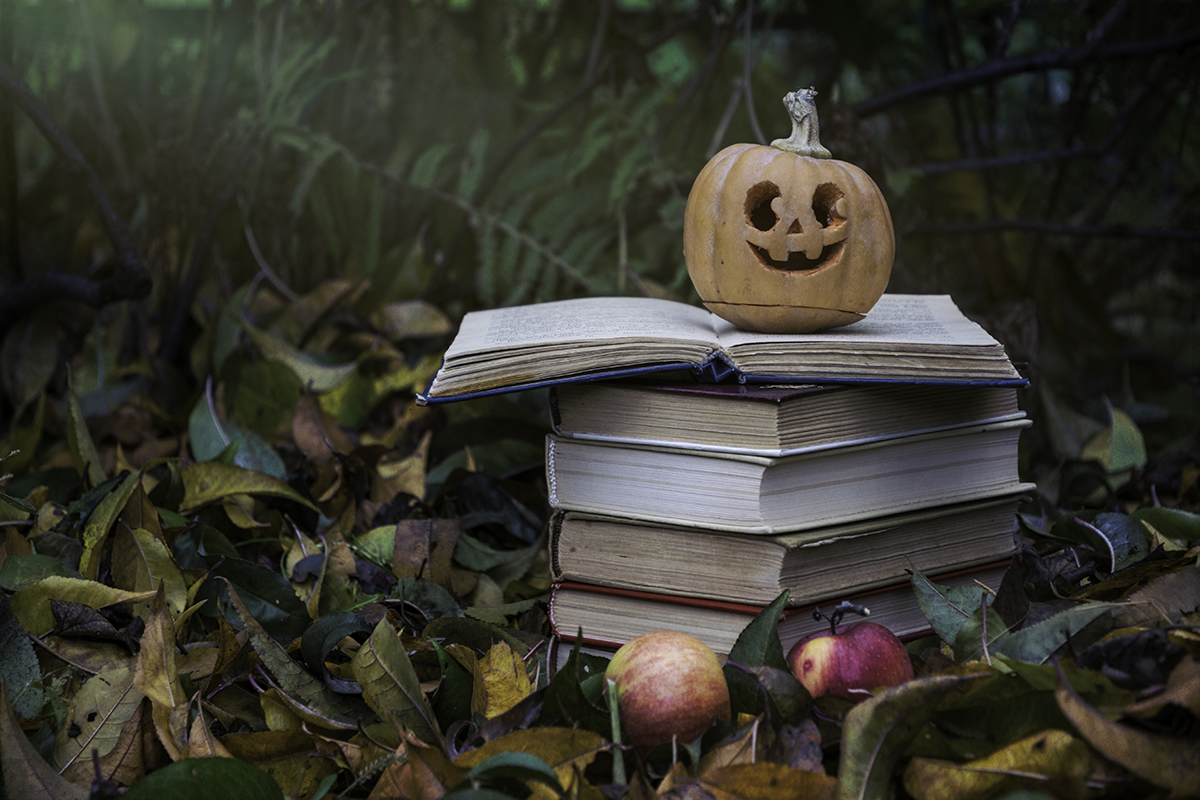From a horror classic to folk-tale adaptations to a contemporary romance with a spooky twist, Emory librarians share their favorite eerie reads.
Peter Shirts, music and dance librarian, Robert W. Woodruff Library
“Cuckoo Song” by Frances Hardinge
I read everything Frances Hardinge publishes. If you like the weirdness and originality of Neil Gaiman but want your creepy books a little more PG, I recommend Hardinge as your new favorite author. And “Cuckoo Song,” with its haunting, surreal parallel world, is a great place to start: a mystery/horror set in post-WWI England with an unreliable narrator who may just be a pile of sticks.
“Dread Nation” by Justina Ireland
What if the U.S. Civil War ended with a zombie outbreak? Jane, a Black girl living that reality in its aftermath, is trained to protect rich white families at Miss Preston’s School of Combat in Baltimore. Instead, she uncovers a conspiracy ... and ample opportunities to test her zombie-killing skills.
“A Sorceress Comes to Call” by T. Kingfisher
Having a controlling mother is much worse when that mother is also a witch. Cordelia has pretty much given up hope that she will ever be anything more than her mother’s pawn. And that’s before she is betrayed by the person she thought was her only friend. When her mother takes her out of town in search of a new victim, however, Cordelia gains an unexpected ally and, with it, a possible way out. T. Kingfisher, a.k.a. Ursula Vernon, is a master of modern fairy tales.
Shanna Early, instruction archivist, Stuart A. Rose Manuscript, Archives, and Rare Book Library
“Dracula” by Bram Stoker
Imagine living in a world where most people don’t know about vampires, and then your friends start ailing and dying in strange ways. That’s exactly what the characters in “Dracula” face, and they have to compile everything they know about the uncanny Transylvanian count in order to solve the mystery of his identity.
October’s the perfect time to return to this classic vampire tale. Stoker’s book unfolds as a series of diaries and letters — with young heroine Mina Harker arguably acting as the sleuth who pieces it all together … that is, until Count Dracula sets his sights on her.
Mina records collected notes, diaries, letters, newspaper clippings and voice recordings into a carbon-copied document — using the era’s latest technology, the typewriter. It’s one of the novel’s many examples of the triumph of modern knowledge over the antiquated ways of a bygone era, represented by Count Dracula. That’s part of why this story endures; we’re always negotiating between old ways and new ideas.
Katalin Rac, Jewish Studies librarian, Robert W. Woodruff Library
“Collected Stories” by Isaac Bashevis Singer
Demons, spirits and ghosts have preoccupied Jewish authors and scribes for centuries. In the short stories of Isaac Bashevis Singer, who immigrated to the United States from Poland in 1935, demons are storytellers as well. And they use the power of the word to cast a spell on the protagonist and reader alike.
In “The Mirror,” an evil imp recounts how he lured the beautiful, young Zirel to the underworld. In “Taibele and Her Demon,” a lonely woman is tricked by a clever villager who pretends to be a demon to woo her, leading to a complex relationship that blends superstition with real human connection. In “The Last Demon,” a demon hiding in an attic in a village whose inhabitants have been killed in the Holocaust admits with resignation: supernatural evils are irrelevant. “Why demons, when man himself is a demon?” he asks. “Why persuade to evil someone who is already persuaded?” Sustaining himself on the letters of an old Yiddish book, the demon learns that while books have the power to feed evil like him, they can also help survivors fight for their souls.
“Rules for Ghosting: A Novel,” Shelly Jay Shore
The benevolent ghosts in Shelly Jay Shore’s contemporary debut novel are wholly different than the imps and demons populating Singer’s short fiction.
Ezra Friedman stays away from the family business he grew up in — a funeral home. Why? He sees ghosts — including that of his grandfather, whom he misses very much. His avoidance makes his crush on the funeral home volunteer, who happens to be his neighbor, inconvenient. But a whirlwind of events set off by Ezra’s mother at a family Passover pushes him down a road of discovery — of family secrets and his capacity to trust the love that surrounds him enough to build the life he’s been dreaming of.

